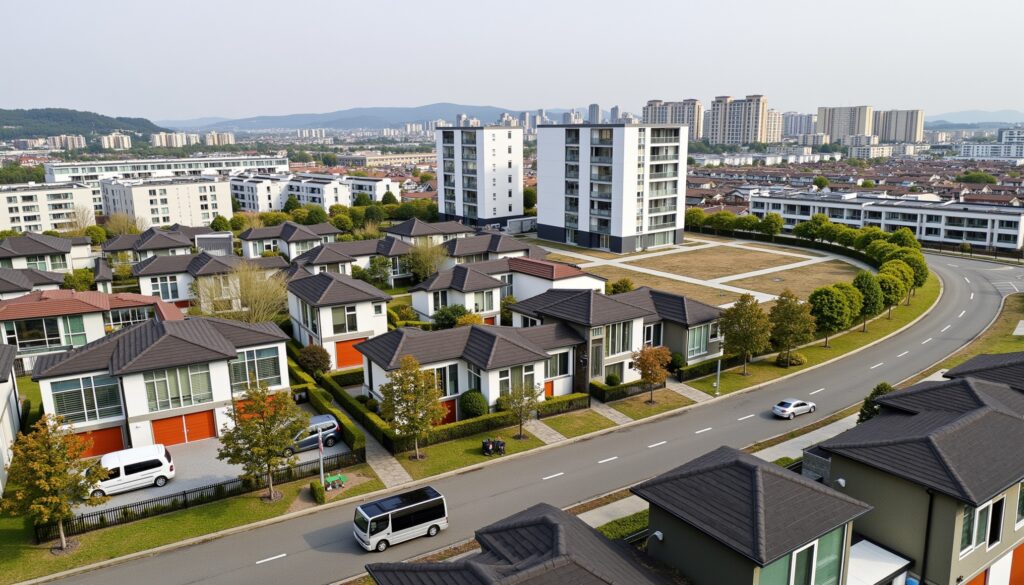Navigating the world of property rental rates can be a daunting task for both homeowners and renters alike.
Understanding what influences these rates, how to calculate them accurately, and knowing when to adjust them is crucial for making informed decisions.
In this comprehensive guide, we will unlock the secrets behind property rental rates, diving into the significant factors that affect pricing, the importance of location, and essential tips for negotiation.
Whether you’re a homeowner looking to rent out your property or a renter searching for your next home, this article will equip you with valuable insights to navigate the rental market with confidence.

Key Takeaways
- Understanding property rental rates involves recognizing various influencing factors.
- Location plays a crucial role in determining rental rates for properties.
- Calculating rental rates accurately requires following a clear step-by-step approach.
- Avoiding common mistakes can lead to more competitive and fair rental pricing.
- Staying aware of market trends is essential for timely adjustments of rental rates.
Understanding Property Rental Rates: What Influences Them?
When delving into the intricacies of property rental rates, particularly in a vibrant market like Costa Rica, several key factors come into play that potential renters and investors should understand.
Firstly, location is paramount; areas close to beaches, national parks, or urban centers generally command higher rental prices.
Additionally, the type of property significantly influences rental rates—luxury villas and beachfront condos typically attract a premium compared to more modest accommodations.
Seasonal demand also plays a critical role; during high tourist seasons, rental rates tend to spike as visitors flock to experience the beauty of Costa Rica.
Furthermore, amenities offered, such as pools, outdoor spaces, and proximity to essential services, can affect the attractiveness and pricing of a rental property.
By understanding these dynamics, individuals can better navigate the Costa Rican real estate market and make more informed decisions regarding property rental rates.
The Importance of Location in Setting Rental Rates
When it comes to setting property rental rates, location plays a crucial role that can greatly influence both demand and pricing.
In Costa Rica, for example, real estate markets can vary significantly from one area to another, impacting the affordability and appeal of rental properties.
Properties located in popular tourist destinations, such as Tamarindo or Manuel Antonio, often command higher rents due to their proximity to beaches, nightlife, and recreational activities.
Similarly, areas near major urban centers like San Jose may also see elevated property rental rates because of their accessibility to businesses, schools, and healthcare facilities.
Investors and landlords must meticulously evaluate the surrounding amenities and the overall desirability of a location to effectively set competitive rental prices that attract tenants while maximizing their investment returns.
Understanding local market trends and demographic preferences is essential in Costa Rica’s dynamic real estate landscape, ensuring that property rental rates align with prospective tenants’ expectations and budgets.
‘Price is what you pay. Value is what you get.’ – Warren Buffett

How to Calculate Property Rental Rates: A Step-by-Step Guide
Calculating property rental rates can seem daunting, but with the right approach, it becomes a straightforward task that anyone can master.
Start by researching the local market to understand how comparable properties are priced; this will form the foundation of your rental rate calculation.
Look at the rental prices of similar properties in your area, taking note of factors such as size, location, amenities, and overall condition.
Once you have this information, consider the average rent per square foot as a benchmark.
Multiply this figure by the square footage of your property to get a rough estimate of your rental rate.
Additionally, factor in seasonal trends in the real estate market, as demand can fluctuate depending on the time of year.
Don’t forget to account for any unique features your property may have that could justify a higher rental rate, such as recent renovations or added services.
Lastly, it’s wise to consult with a property management professional or real estate agent who specializes in the local market to ensure your rental rate is competitive yet reflective of your property’s value.
By following this step-by-step guide, you can confidently establish competitive property rental rates that attract potential renters while ensuring a healthy return on your investment.
Common Mistakes to Avoid When Setting Rental Rates
When it comes to establishing competitive property rental rates, many landlords make common mistakes that can significantly impact their rental income and occupancy rates.
One critical error is ignoring local market trends.
It’s essential to research comparable properties in your area to determine an appropriate price point.
Setting rates too high can deter potential renters, while pricing too low may lead to undervaluing your investment.
Additionally, neglecting seasonal fluctuations can affect rental demand.
Properties in tourist destinations, like those in Costa Rica, may see higher demand during peak seasons, necessitating a careful review of rates throughout the year.
Moreover, failing to account for property features—such as amenities, location advantages, or condition—can leave money on the table.
Always be sure to regularly assess and adjust your property rental rates based on these factors to stay competitive and maximize your earnings.

Navigating Market Trends: When to Adjust Your Rental Rates
In the dynamic landscape of Costa Rica real estate, understanding when to adjust your property rental rates is crucial for maximizing your investment returns.
As the market fluctuates due to seasonal demand, tourist influx, and local economic changes, keeping a vigilant eye on these trends can help property owners make informed decisions.
For instance, during the peak tourist season, it may be advantageous to slightly increase rental rates to capitalize on the influx of visitors seeking accommodations.
Conversely, in the off-season, adjusting rental rates downwards might be necessary to maintain occupancy and attract long-term tenants.
Additionally, a thorough analysis of comparable properties in your area can provide insights into competitive pricing strategies.
By adapting your property rental rates to align with market trends, you not only enhance your property’s appeal but also ensure a steady stream of income throughout the year.
Tips for Homeowners and Renters on Negotiating Rental Rates
Negotiating property rental rates can be a daunting task for both homeowners and renters, but with the right approach, it can lead to a favorable outcome for all parties involved.
Start by conducting thorough research on the local rental market to understand average rates and trends; this can provide a solid foundation for your negotiation.
Be transparent about your financial situation while expressing your willingness to agree to a fair price.
Additionally, highlight the benefits you bring to the table, such as being a reliable tenant or taking great care of the property.
For homeowners, being flexible about lease terms, such as the duration of the rental agreement or including utilities, can also make your offer more attractive to potential renters, while helping to justify the rental price.
Ultimately, approach the negotiation with an open mind and willingness to discuss various options, and you’ll likely find a middle ground that satisfies both parties regarding property rental rates.
Frequently Asked Questions
What factors influence property rental rates?
Property rental rates are influenced by several factors, including location, property size, amenities, market demand, and the overall economy.
Local competition and seasonal trends also play a significant role.
Why is location important for rental rates?
Location significantly affects rental rates because it determines accessibility, desirability, and the quality of nearby amenities like schools, public transport, and shopping options.
Properties in prime locations typically command higher rental prices.
How do I calculate the rental rate for my property?
To calculate the rental rate, research similar properties in your area, consider their size and amenities, and analyze how much they rent for.
Online rental calculators can also assist in determining an appropriate rate based on local market data.
What common mistakes should I avoid when setting rental rates?
Common mistakes include underpricing or overpricing your property, neglecting to account for market fluctuations, and failing to compare with similar properties in your area.
It’s crucial to conduct thorough research to set a competitive rate.
How can homeowners and renters negotiate rental rates effectively?
Both homeowners and renters can negotiate effectively by being informed about local market trends, presenting valid reasoning for their proposed rate, and being willing to compromise.
Highlighting unique property features or expressing intent for a long-term lease can also be beneficial.





